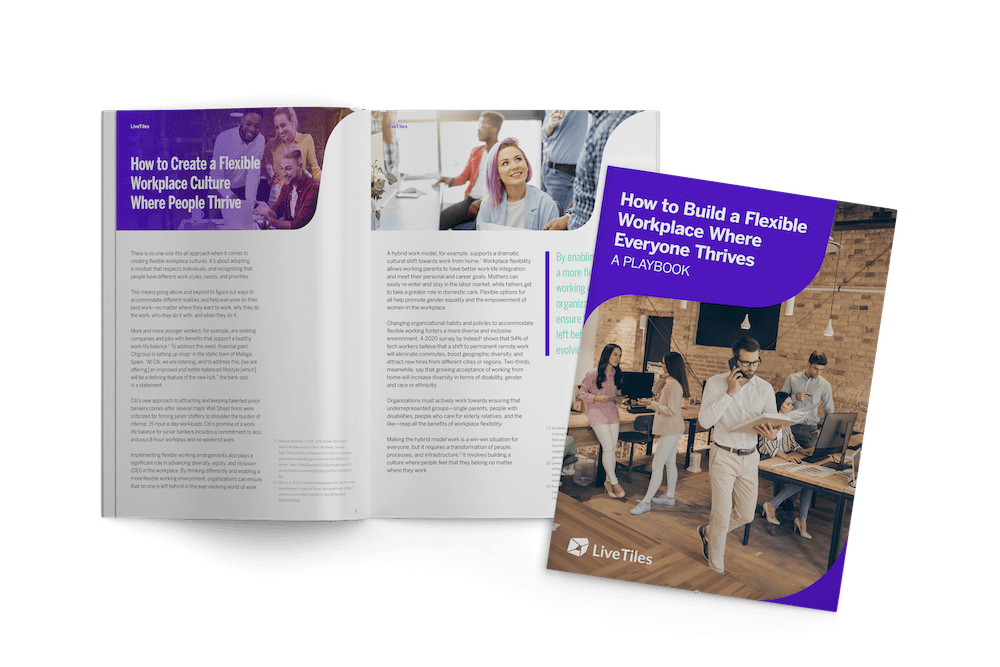How to Build a Flexible Workplace Culture that Works For All
The future of work will be more flexible than ever. With high resignation rates and a tight labour market likely to continue, organisations that don’t move toward a flexible workplace model face more significant risks of losing their best people due to unprecedented burnout and stress and increased demands for more flexible, employee-focused working arrangements.
Workplace flexibility is not just a nice thing to do; it’s the smart thing to do. Flexibility is now a currency more highly valued than salary, especially by younger workers. More than half of today’s employees will leave their jobs if they don’t get the flexibility and work-life balance needed to succeed.
To improve employee engagement and retention, organisations must step up and provide employees the flexibility and freedom to work from anywhere they want. In this post, we explore insights from our just-published ‘Flexibility Playbook’, which explains why workplace flexibility is now an essential practice that enables organisations to recruit the best, retain the best, and get the best results.
Why flexibility matters in the new world of work
Flexible working solutions help organisations attract and retain top-notch talent by driving key outcomes such as workplace engagement, productivity, well-being, diversity, equality, and inclusion.
The sudden shift to remote work made more employees realise that they can fulfil their responsibilities at work even if they’re not at the office. Flexible working arrangements enable people to fit work and home life together and manage life’s transitions with the least stress. This, in turn, increases employee engagement and well-being.
A dramatic cultural shift towards work-from-home means that a hybrid model is necessary for working parents to achieve success—both at work and at home. With flexible working arrangements, for instance, mothers can enter and stay in the labour market while fathers can play more prominent roles in child care and domestic affairs. This flexible culture helps promote gender equality and women’s empowerment in the workplace.
For flexible working to succeed, it must be available to everyone who can benefit from it—from single parents to mothers and fathers, people with disabilities, people who care for elderly relatives, and senior and young workers alike.
Embracing flexibility in the workplace entails accommodating people from every background and every experience. To stay competitive, organisations must create diverse, inclusive, and flexible cultures that help everyone do their best work.
What your organisation can do to build a flexible workplace culture
There is no straightforward formula for achieving flexibility in an organisation. And it requires so much more than just veering away from a traditional 9-to-5 workplace structure.
Ultimately, it’s all about building a culture of trust where people feel that they belong and feel appreciated and heard—no matter where they want to work, why they work, who they do it with, or when they do it.
Offering flexibility in the workplace is more than anything about creating positive employee experiences. You can learn more about how your organisation can achieve the right level of flexibility and develop a culture that makes the hybrid model work for everyone. Our Flexibility Playbook is now available for free download.
Download your free copy of our 'Flexibility Playbook’ ebook and see how companies are transforming employee experience and workplace culture today.









